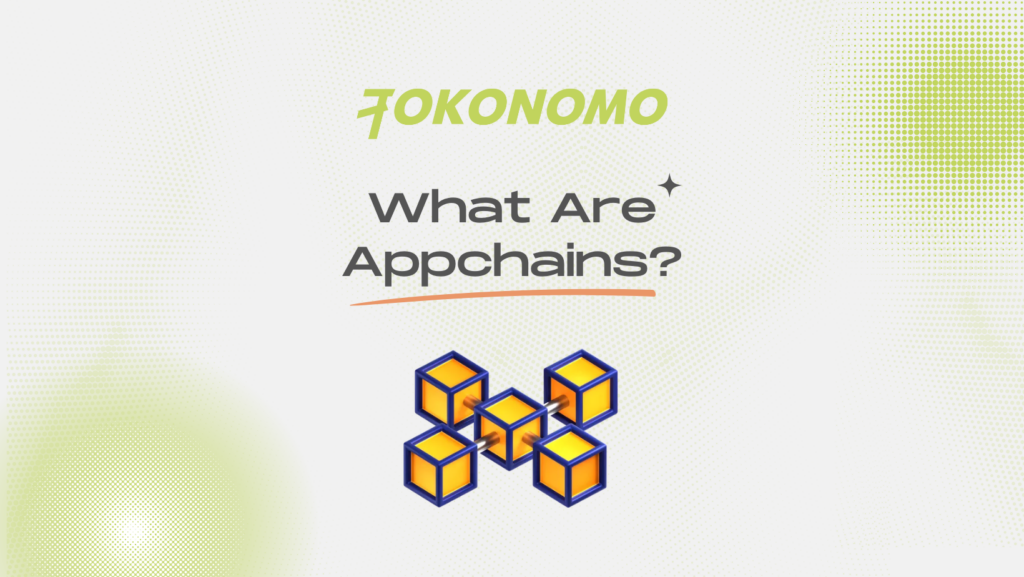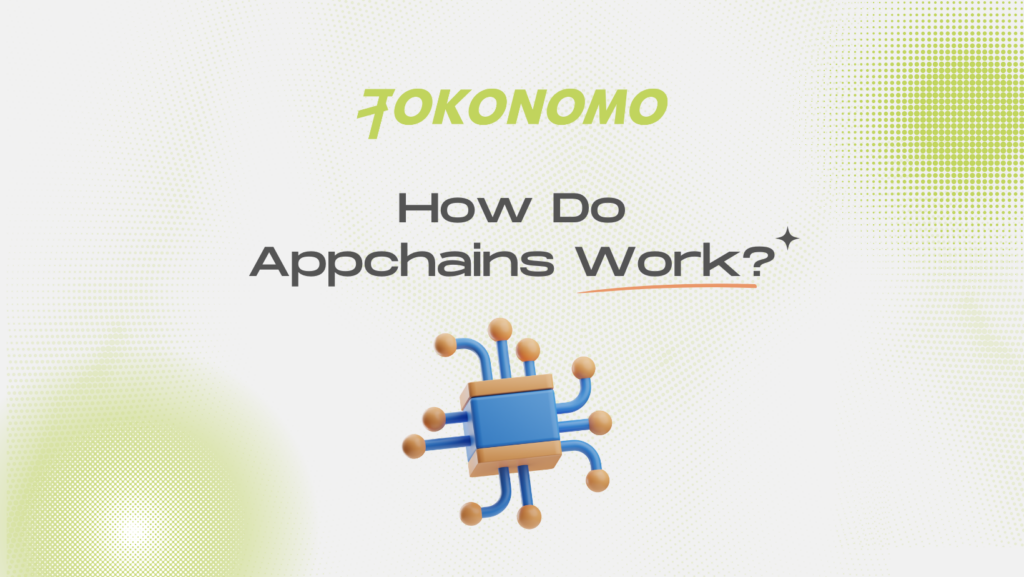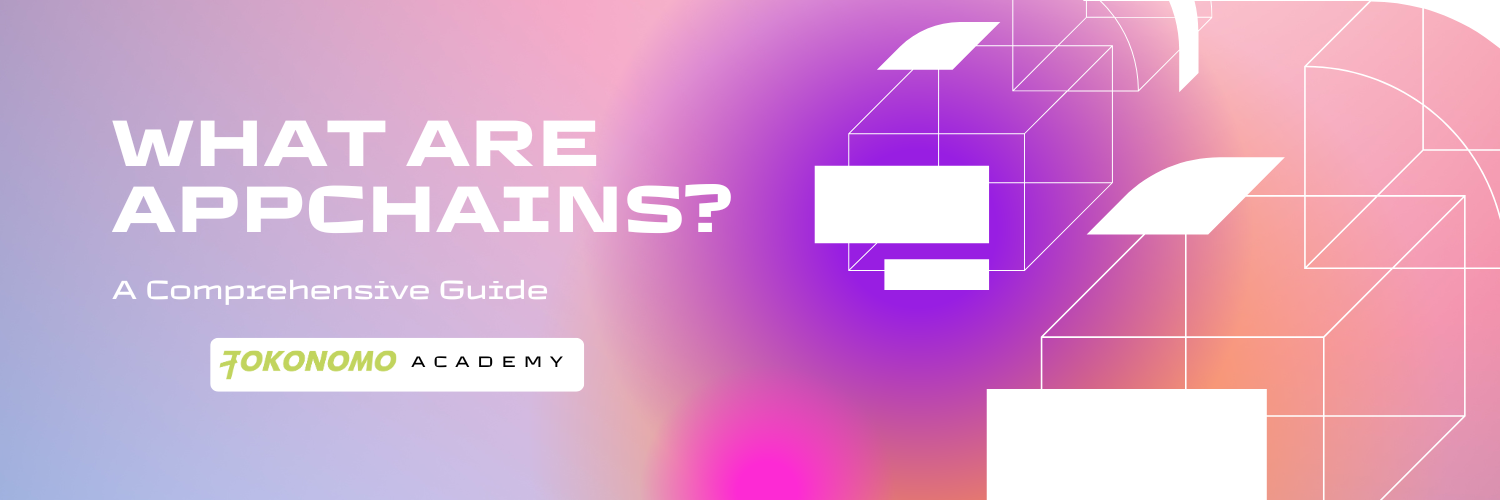In this article, we will delve into the concept of appchains, which have arisen specifically to cater to the unique requirements of various applications. We’ll examine the essence of appchains, elucidate their advantages, draw comparisons with layer 1 blockchains, and examine several illustrative examples of appchains.
What Are Appchains?
Unlike general-purpose blockchains, which cater to a myriad of applications, appchains custom-build blockchains tailored to serve specific functions. By focusing on individual applications, appchains engineer optimization in transaction processing, fee structures, smart contract capabilities, and various other elements to precisely match the requirements of particular applications.


How Do Appchains Work?
Appchains function on the fundamental principles of blockchain technology, albeit with adaptations tailored to specific application requirements. Each appchain allocates its resources to distinct tasks, ensuring they remain focused on their designated objectives and aren’t diverted to unrelated applications.
Furthermore, application-specific blockchains have the flexibility to employ diverse consensus mechanisms, such as Proof of Work (PoW) or Proof of Stake (PoS), chosen based on the specific needs of each application. For example, a financial application’s appchain might opt for a different consensus mechanism compared to one serving supply chain management purposes.


Moreover, smart contracts within appchains can be intricately crafted to align with the unique demands of individual applications. This facilitates the implementation of sophisticated contract logic, thereby enhancing the effectiveness and operational efficiency of each application.
In general, fully-developed appchains typically consist of five distinct layers in their architecture:
- Network Layer. The network layer functions as the primary facilitator of peer-to-peer network operations within the blockchain, enabling seamless communication, data exchange, and active involvement in transaction validation processes among nodes.
- Application Layer. Within the application layer, a diverse array of applications operates on the blockchain framework. This layer provides robust interfaces for developers to construct, deploy, and manage decentralized applications (DApps) effectively.
- Data Layer. At the core of the system lies the data layer, entrusted with the meticulous organization and storage of blockchain data. Its duties encompass maintaining the blockchain’s dynamic state, meticulously logging transaction particulars, and managing the intricacies of smart contract data.
- Consensus Layer. Embedded within the architecture is the pivotal consensus layer, tasked with implementing the designated consensus algorithm governing the appchain. This layer remains adaptable, accommodating various consensus mechanisms like Proof of Work (PoW) or Proof of Stake (PoS).
- Smart Contract Layer. The smart contract layer serves as the catalyst for the automation, verification, and enforcement of smart contracts, empowering seamless execution and compliance within the blockchain ecosystem.
Advantages of Appchains
Scalability
Appchains, by allocating resources specifically to particular tasks or functions, aim to enhance transaction throughput and diminish latency for individual applications. This specialization effectively tackles the scalability hurdles encountered by general-purpose blockchains.
Modularity
Appchains stand out for their modular architecture, in contrast to the monolithic design commonly found in general-purpose blockchains. This modular structure grants developers the freedom to tailor the blockchain’s functionalities to suit the specific requirements of individual DApps, enhancing adaptability and customization.
Interoperability
Appchains are purposefully engineered to promote interoperability, streamlining communication among diverse DApps. This seamless integration facilitates users’ access to the benefits of different applications with ease.
Comparison Between Appchains and Layer 1 Blockchains
Architecture
The architecture of appchains is highly adaptable, offering flexibility to align with various blockchain layers. This adaptability enables them to be constructed atop existing networks or to function independently. In contrast, layer 1 blockchains maintain a standardized structure with predefined rules for network participants, constraining their capacity to cater to the specific requirements of individual DApps.
Consensus Algorithm
Appchains possess the capability to integrate consensus mechanisms tailored to their specific use cases. This flexibility allows for adjustments based on the underlying layer they leverage or if they operate autonomously. Conversely, layer 1 blockchains typically adhere to inherent consensus models like PoW or PoS, which, while stable and uniform, may lack the adaptability required for certain applications.
Scalability
Appchains prioritize scalability within the scope of individual applications, emphasizing high transaction throughput and minimal latency. In contrast, layer 1 blockchains often encounter scalability challenges due to their accommodation of diverse applications.
Comparison Between Appchains and Sidechains
Although both appchains and sidechains communicate with the main chain, sidechains specifically engineer themselves to perform a myriad of functions. Thus, unlike appchains, sidechains fulfill diverse roles and do not confine themselves to a singular application.
Examples of Appchains
Polkadot
Polkadot parachains, an integral part of the Polkadot ecosystem, are essentially individual blockchains operating concurrently alongside the Polkadot Relay Chain, thereby leveraging its security measures. These parachains, akin to appchains, boast their tokenomics, governance structures, and functionalities, thus allowing for customization to suit the unique requirements of various applications.
Avalanche
Avalanche subnets, within the broader Avalanche network, serve as distinct blockchains tailored for specific applications. Each subnet is upheld by its dedicated validators, collectively determining the state of a series of blockchains within the network.
Cosmos
Cosmos zones operate independently as blockchains interconnected with the Cosmos Hub, akin to appchains in the Cosmos ecosystem. Utilizing the Inter-Blockchain Communication (IBC) protocol facilitates seamless data transfer across the network.
Conclusion
Appchains, tailor-made blockchains crafted to cater to the unique requirements of specific applications, offer an elevated level of scalability and adaptability in contrast to their general-purpose counterparts. These specialized chains boast customization options, empowering developers to meticulously select parameters aligned with their application’s demands. Consequently, leveraging appchains can elevate the efficacy and operational efficiency of individual applications, concurrently alleviating the burden on general-purpose blockchain networks.











